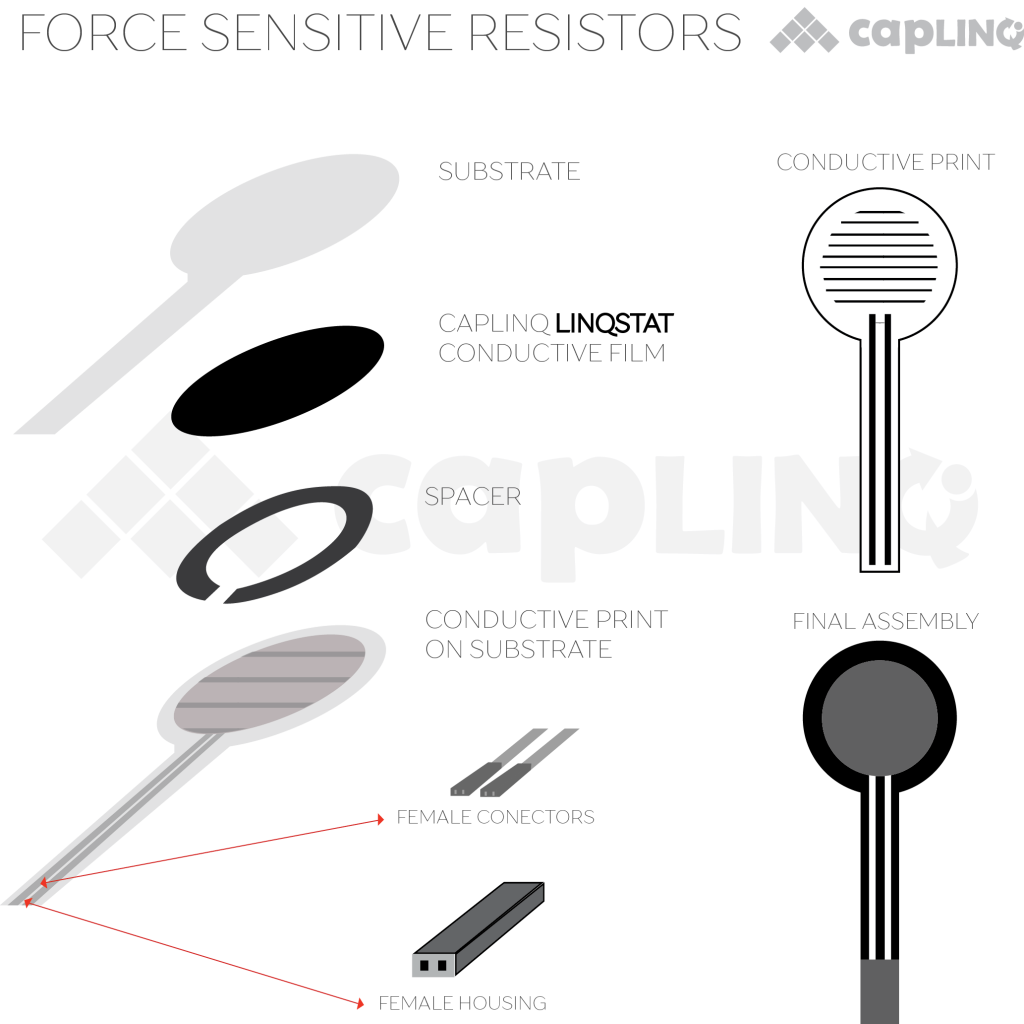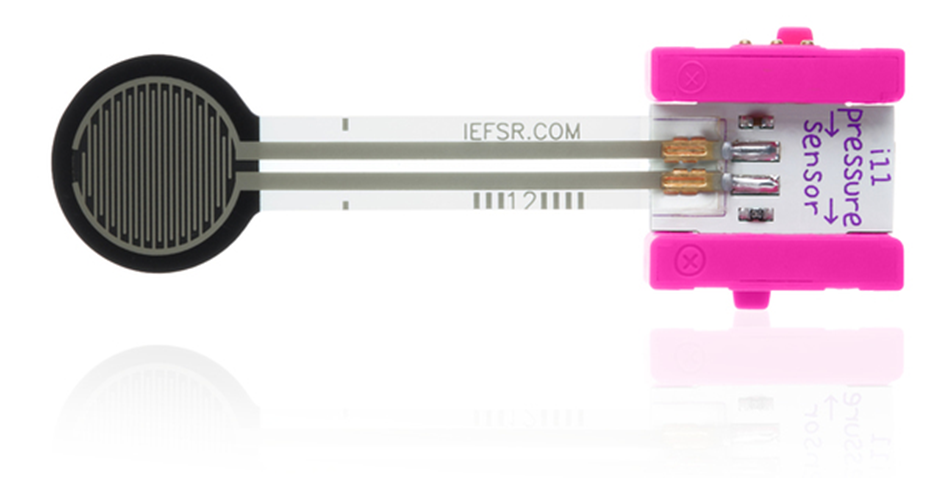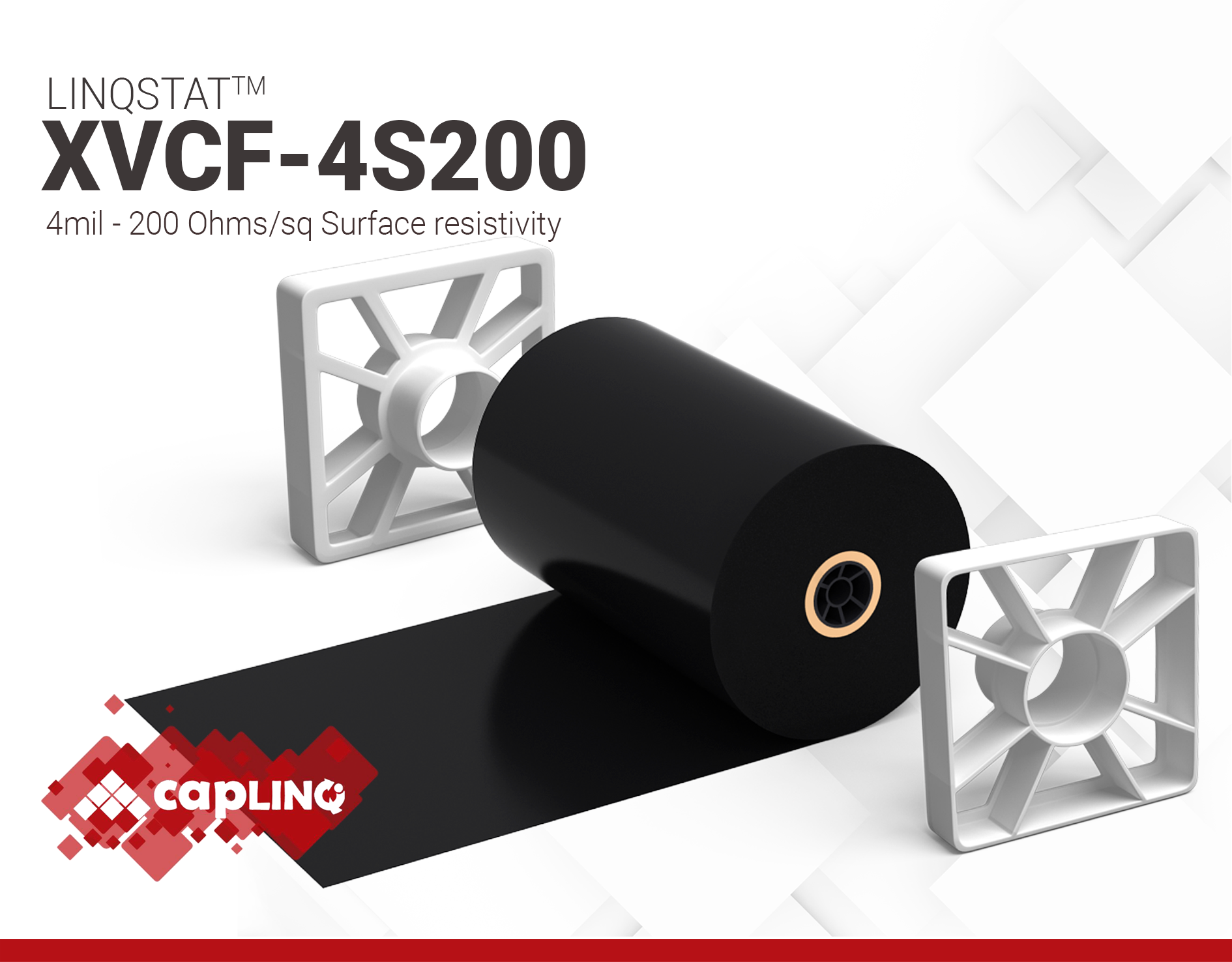XVCF-4S200 | LINQSTAT 4 mil - 200 Ω/sq Conductive Film
- 4 mil - 101.6um - 0.1mm
- ±200 ohms/sq Surface resistivity
- ±1.05 ohms/cm Volume resistivity
Product Description
LINQSTAT XVCF-4S200 is a thin (0.1mm or 4 mil) and highly conductive polyethylene film with a very high electrically conductive carbon loading and a very dense polymer mix. Having a surface resistance of ±200 ohms/sq, this extra loading allows the film to be used in applications that require a lower resistivity. It is the most conductive film in our product line. The volume resistivity still needs to be tested. This is a product that is under development and will have large MOQs for the first batches.
Features:
- Black opaque, matte finish and printable
- Thin, lightweight, inert with high electrical conductivity
- Great thermal stability and heat sealable (Check process parameters)
- Resistance to a range of chemicals and alcohols (Check details)
- Humidity independent conductivity and aging-resistance
- Flexible and exceptional abrasion resistance
- Available in various lengths and widths upon request
Applications:
XVCF-4S200 conductive films are groundable, providing anti-static protection to electronic components. Due to the low-resistivity and its resistance to a range of chemicals and alcohols, XVCF films are well suited for applications requiring electrochemical reactions, high conductivity or charge storage including but not limited to electrodes (ECG, TENS, Defibrillation and Iontophoresis), batteries (flat-cell zinc/manganese dioxide (MnO2), Lithium Ion and Lithium polymer), wearable electronics and digital whiteboards.
Technical Specifications
| General Properties | |||||
| Chemistry Type | Carbon-Loaded PE | ||||
| Color Color The color | Black | ||||
| Film Thickness | 0.1 mm | ||||
| Specific Gravity Specific Gravity Specific gravity (SG) is the ratio of the density of a substance to the density of a reference substance; equivalently, it is the ratio of the mass of a substance to the mass of a reference substance for the same given volume. For liquids, the reference substance is almost always water (1), while for gases, it is air (1.18) at room temperature. Specific gravity is unitless. | 1.15 | ||||
| Electrical Properties | |||||
| Surface Resistivity | 200 Ohms/sq | ||||
| Volume Resistivity Volume Resistivity Volume resistivity, also called volume resistance, bulk resistance or bulk resistivity is a thickness dependent measurement of the resistivity of a material perpendicular to the plane of the surface. | 1.1x100 Ohms⋅cm | ||||
| Thermal Properties | |||||
| |||||
| Thermal Conductivity Thermal Conductivity Thermal conductivity describes the ability of a material to conduct heat. It is required by power packages in order to dissipate heat and maintain stable electrical performance. Thermal conductivity units are [W/(m K)] in the SI system and [Btu/(hr ft °F)] in the Imperial system. | 0.055 W/m.K | ||||
| Other Properties | |||||
| RoHS Compliant RoHS Compliant RoHS is a product level compliance based on a European Union Directive which restricts the Use of certain Hazardous Substances in Electrical and Electronic Equipment (RoHS). Products compliant with this directive do not exceed the allowable amounts of the following restricted materials: lead, mercury, cadmium, hexavalent chromium, polybrominated biphenyls (PBB) and polybrominated diphenyl ethers (PBDE), with some limited exemptions | Yes | ||||
Additional Information
Application Force Sensitive Resistor
Given its low surface resistance, LINQSTAT XVCF films have been successfully used as a pressure sensor making them useful for applications that require more conductivity to be able to detect more subtle pressure differences.
Introduction A force sensitive resistor (FSR) is a material which changes its resistance when a force or pressure is applied. Conductive film is an example of such force resistance material. In other words, force sensitive resistor it’s a sensor that allow you to detect physical pressure, squeezing and weight. Usually, force sensitive resistors are very simple to be made and low cost, although they are not accurate. For this reason, basically when you use FSR you should only expect to get ranges of response instead of precise results. Therefore, while FSRs can detect weight, they cannot detect exactly how many pounds of weight.

Work Mechanism FSR’s are usually composed by two substrate layers. Followed by the conductive film and the plastic spacer, which includes an opening aligned with the active area. After the spacer layer there’s the conductive print on substrate. When external force is applied to the sensor, the conductive film is deformed against the substrate. Air from the spacer opening is pushed through the air vent, and the conductive film comes into contact with the conductive print on the substrate. The more of the conductive ink area get in touch with the conductive film, the lower the resistance. Therefore, the more pressure applied on the sensor, the more the layers touch the conductive film and that makes the resistance go down.
Product Selection
- We have various grades of conductive film regarding volume conductivity, VCF < MVCF < XVCF. Typically the larger the pressure sensor, the less conductive the film needs to be. You could still use the more-conductive material, but then you are paying for conductivity that you don’t necessarily require.
- The volume resistivity is thickness dependent. Where the thickness plays a role and is particularly important for pressure sensor applications. The thinner sheets are less sensitive to pressure changes than the thicker ones (because essentially by reducing the thickness, you increase the conductivity). The minimum thickness suitable for pressure sensors is 4mil, but the 6‑mil and 8‑mil thicknesses are more common for pressure sensors.
Additional Information
Heat Sealing Parameters
- Heat sealing time: 0.5-3.5 sec
- Heat sealing pressure: 30-70 psi
- Heat sealing temperature: 135 °C - 190°C
Chemical Susceptibility
- Methanol: Resistant
- Ethanol: Resistant
- Isopropanol: Resistant
- Weak Acids: Resistant
- Ketones (Acetone): Slow Attack
- Weak Alkalines: Slow Attack
- Hydrocarbons: Non-Resistant
These films have a higher carbon loading than our standard VCF-Series films. This higher carbon loading gives us a lower resistance and as such, a higher conductivity. We come to a physical limit on how much carbon this plastic can be loaded before other properties are adversely affected, and so to get even more conductivity, we need to go to a more dense polymer matrix as we have done with our XVCF-ALS series films. The result of this denser matrix is a higher conductivity and better mechanical properties.
We have recently changed our SKUS. To help you search for them either on google or on our website here's a before and after table. As you can see we went for the "Product codes that make sense" approach:
| XVCF-30009BT150S/9 | XVCF-4S200/23.8CM-1524M | 23.8cm wide x 1524m long |
| XVCF-30012BT150S/2 | XVCF-4S200/30CM-46M | 30cm wide x 46m long |






